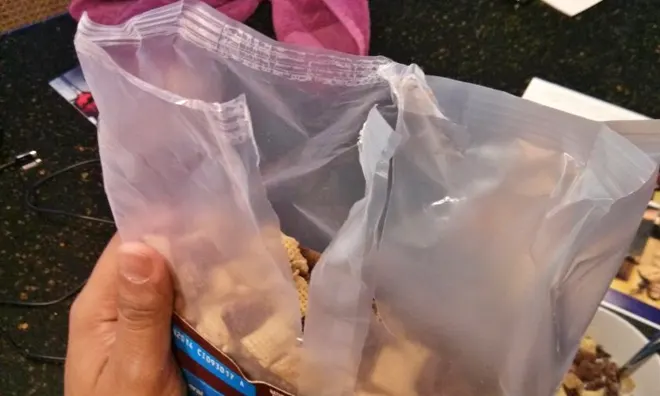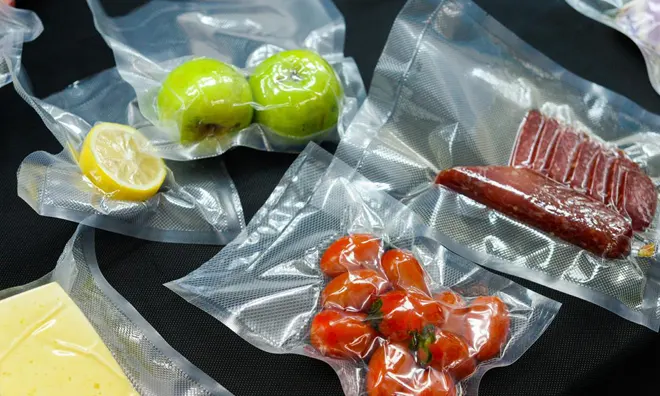Why Is My Vacuum Sealer Not Vacuuming? [7 Quick Fixes]
Vacuum sealers have forever changed the way we store our food. They help us store quickly and for extended periods. So, how does a vacuum sealer work?
After placing the food in the plastic bag, it is placed inside the vacuum sealer. The vacuum sealer sucks out the air moisture from the plastic bag and seals it shut using heat. That way, air can only return inside the bag if opened again.
A vacuum sealer is not vacuuming correctly means it is not sucking out all the air; thus, the bag cannot preserve the food for longer. Learn how to fix this issue.
Why Is My Vacuum Sealer Not Vacuuming? [7 Quick Fixes]
There are many reasons for a malfunctioning sealer. However, before you pry open the machine to fix it, you need to check the basic stuff first. Here are some common reasons why your sealer is not vacuuming properly and their solutions.
Wet Bags
A common reason for a vacuum sealer not working properly is because of wet bags. A vacuum sealer uses heat to melt the open end of the plastic bag and seal it. If your bag is not dry enough, it will not close properly, and some air can get back into it.
To fix this issue, you can use a napkin to wipe the ends of the bag and then place it in the vacuum sealer.
Damaged Sealing Bag

Another reason for a vacuum sealer not vacuuming all the way might be because of a damaged bag. Even a pin-sized hole can make it challenging to store food in it. Always check the bag for wear, tear, and spots before use.
Often, bad-quality bags also get damaged after some time. You might want to change your bag and refrain from buying low-quality plastic bags.
Sealing Space
A vacuum sealer may only be able to seal a bag if there is enough space. If you put too much food in a bag, there might not be enough space for the sealer to seal the bag.

That’s why you should not fill the bag to the brim so it is easily sealable. In the case of a chamber sealer, you need at least 2″ of space between the food and the ends of the bag for a proper seal. If you use an external sealer, the minimum space you need to leave should be 3”.
Faulty Gaskets
If the bag is not the issue, you should check the gasket. The gasket is one of the most essential parts in vacuum sealing machines that require an air-tight seal to prevent leakage. If your gasket is broken, vacuuming is almost impossible.
The gasket is the rubber part inside your sealer lid. You can take it out after your sealer reaches a moderate temperature. If it's broken, you can replace it. You must clean it and place it back inside if it's dirty. However, we recommend replacing your gasket every year for a properly functioning sealer.
You can watch this quick video on replacing the vacuum sealer gasket:
Drip Tray
A Drip tray provides a temporary storage area for small liquid leakages to avoid making a mess on your floor when vacuuming. Many can forget to empty it regularly, and some vacuum sealers are designed such that they stop working when the drip tray is full.
They also have an alarm or a light to notify you when the drip tray is filled. It would be best to empty your drip tray after every few seals for smoother working.
Damaged Lid
Vacuuming is a complex process. If even one piece in the machine is malfunctioning, you cannot seal the bags properly. Similarly, any damage to the lid of the vacuum sealer can also cause failure.
You should properly check the lid of the vacuum sealer for any cracks or missing parts. In this case, you can call the manufacturer or check the nearest store to see if they can provide you with a replacement.
Overheating Due To Continuous Use
Overworking anything or any machine shortens its lifespan. If you use your vacuum sealer frequently, you must ensure certain things. For example, if you don’t use it in an appropriate manner, it might overheat very often.
To avoid that, you need to wait at least 20 seconds between each bag sealing. It provides enough time for the machine to cool down and work properly.
You may also like to check
FAQs
Why is my vacuum sealer not sealing after vacuuming?
If your vacuum sealer is not sealing after vacuuming, the bag is either wet or too full. It might also be because of a broken gasket. You need to wipe the bag's ends before sealing and leave at least 2″ between the food and the lots. You should also check the gasket.
Why is the vacuum sealer not sealing properly?
There are numerous reasons for a vacuum sealer not sealing properly. The most common are wet bags, overfilled bags, broken gaskets, or overheating. You should wipe the open ends before sealing and leave enough space for the seal. It would help if you also replaced the gasket every year.
Final Words
In case of a problem, you need first to check the bags. Wipe their open ends to remove any grease or liquid. Check them for any tears or holes. After that, check the gasket, an important rubber part that helps provide air-tight seals. Empty the drip tray after every few seals and wait 20 seconds between each sealing to cool down the sealer. Check the lid for any damage, in which case, get a replacement. If none of the above methods work, getting a professional to look at your machine might be better.


